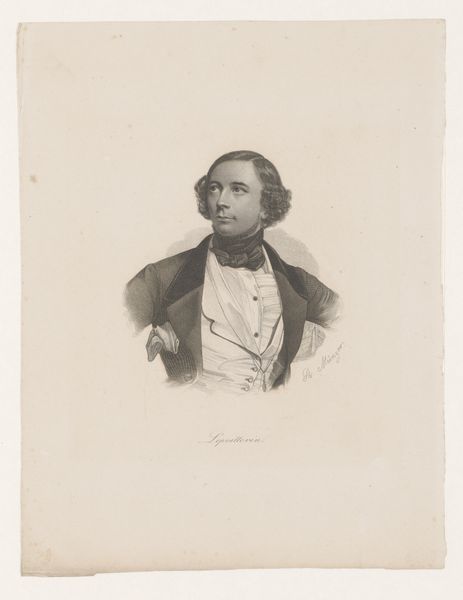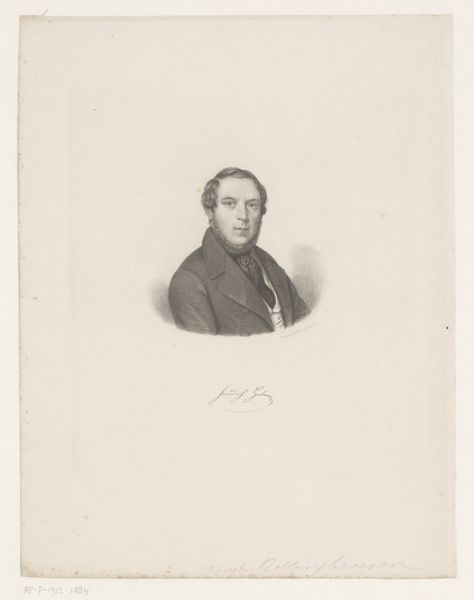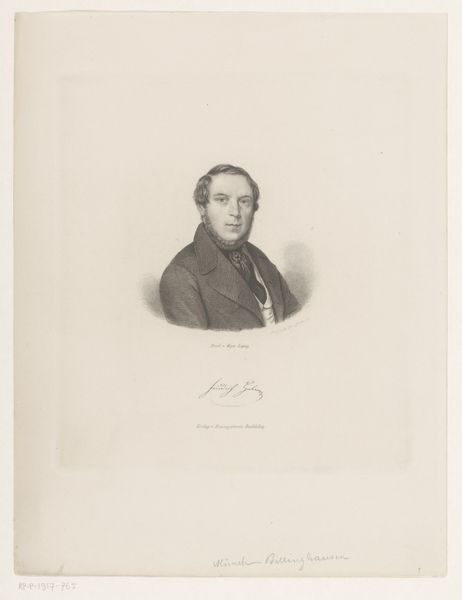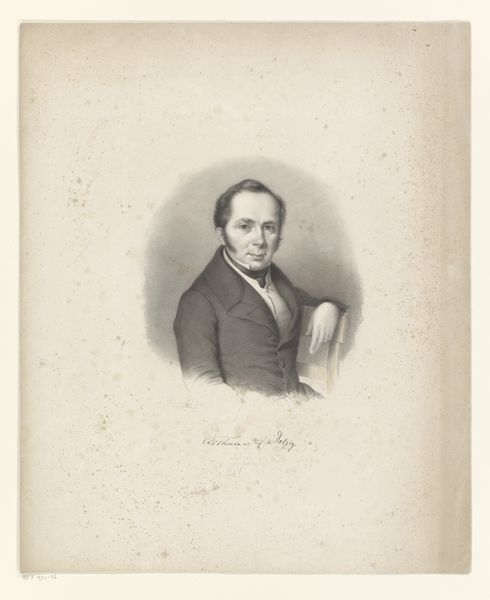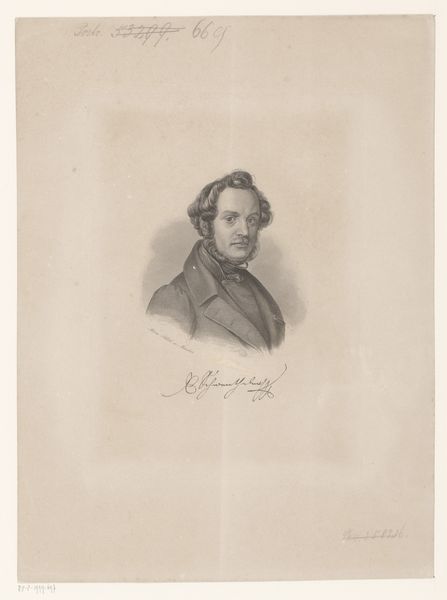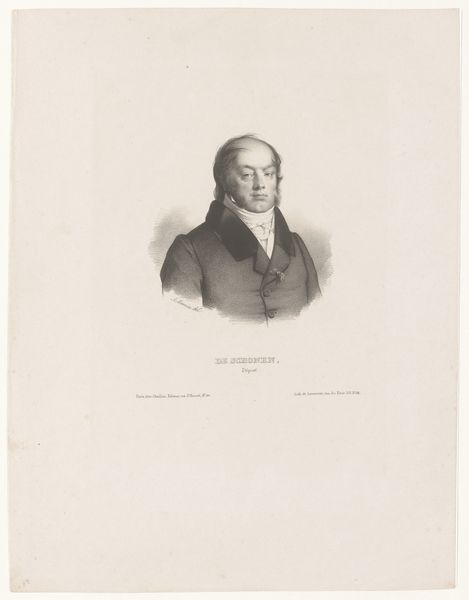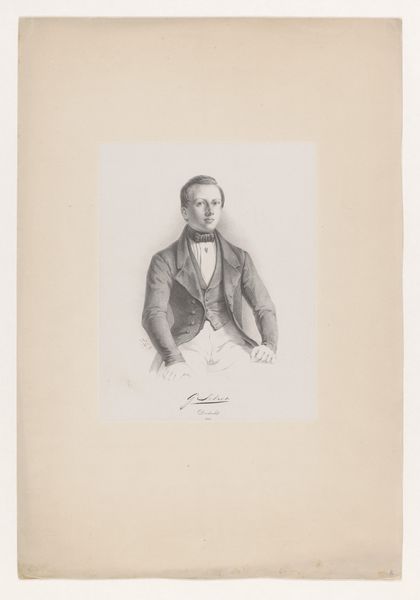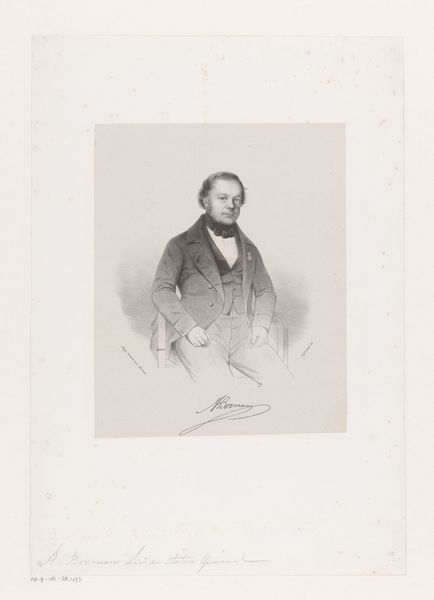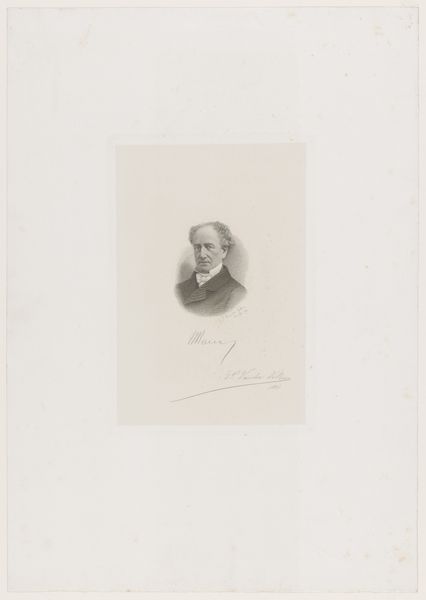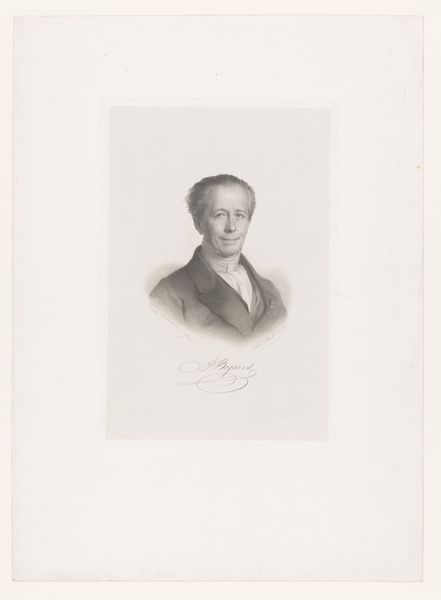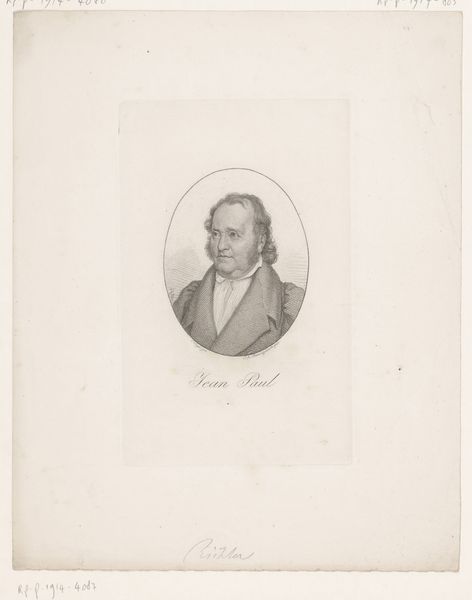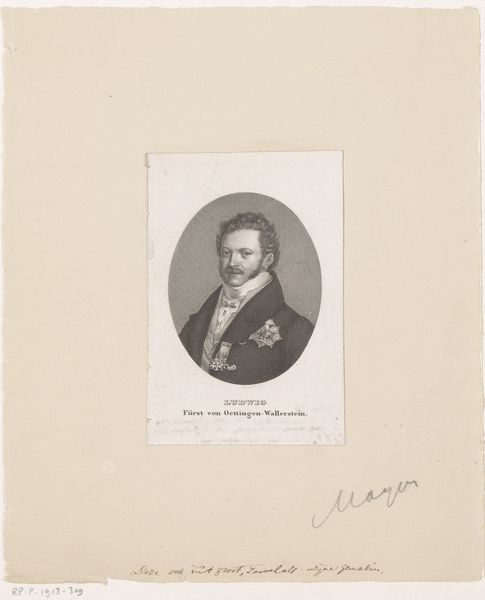
Dimensions: height 264 mm, width 202 mm
Copyright: Rijks Museum: Open Domain
Editor: Here we have a print from 1853, titled "Portret van Louis Royer," by Joseph Schubert. It's a portrait rendered in engraving. It strikes me as rather formal and restrained. What do you make of this work? Curator: It's fascinating how a portrait, even a seemingly straightforward one like this, can function as a vessel for cultural memory. Note the oval frame – what associations does that evoke for you? Editor: I think of classical cameos and official portraiture of rulers. Curator: Precisely. And what does that imply when applied to an image of, presumably, a common citizen? Schubert subtly elevates Royer, doesn't he? Consider also the symbols Royer chooses to display on his lapel, drawing the eye to specific decorations that mark social position. How do those choices communicate values of that society? Editor: I guess it was important to show status and achievements during that time. It does feel like an effort to communicate upward mobility. Curator: Yes, and consider the choice of engraving itself as a medium. It allows for meticulous detail, but also for reproduction and dissemination. The artist's decisions on medium and style both emphasize certain messages that resonate far beyond an individual image. The sharp, elegant lines evoke a certain scientific, objective tone too, perhaps implying enlightenment values? Editor: That makes a lot of sense. I never thought about engraving as a way of subtly conveying a message. Curator: Images like these speak volumes, once you start to decode the language of symbols. Each portrait is like a story silently unfolding through visual cues and artistic techniques. Editor: Thank you for offering your insight; I will certainly look at portraits differently from now on!
Comments
No comments
Be the first to comment and join the conversation on the ultimate creative platform.
